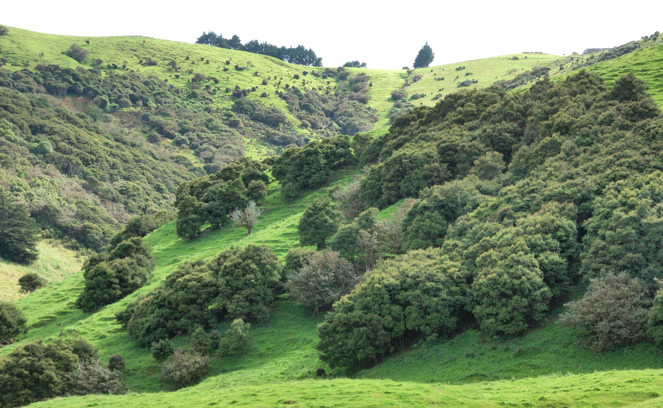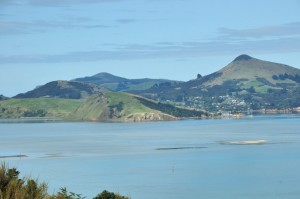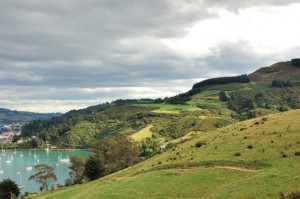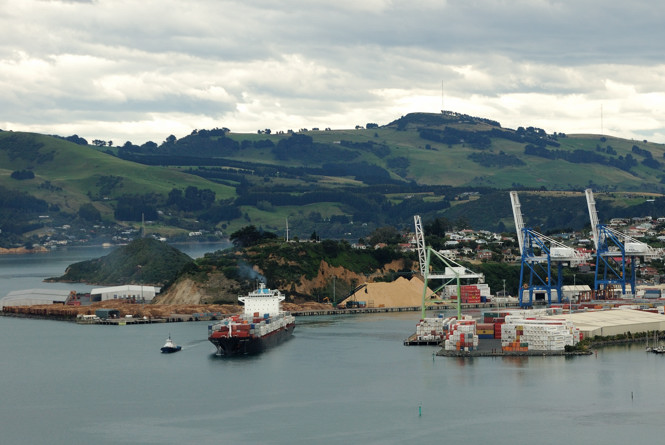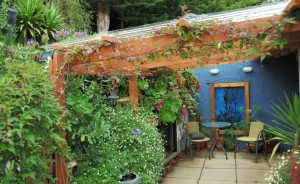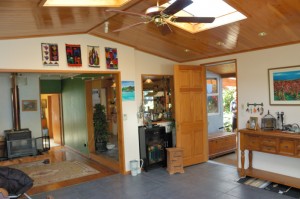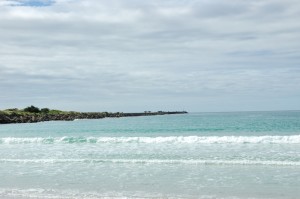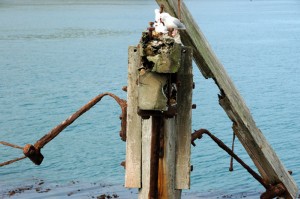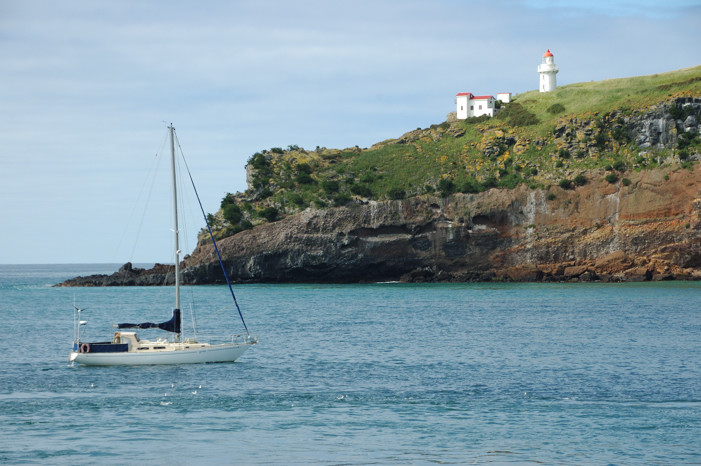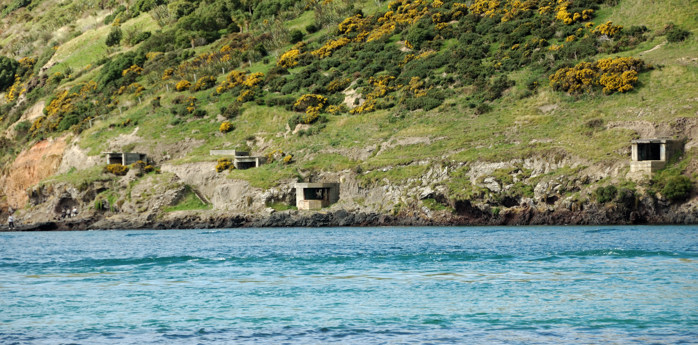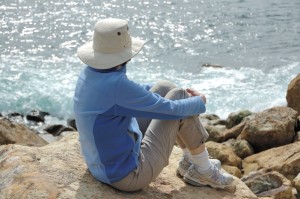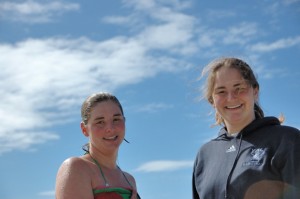Liz Franz, who was Ted’s host at the University of Otago, her husband Mike, and their son Matai have a wonderful house on 23 acres of land near the opening of the Otago Harbor. Liz bought this property, which was a hillside sheep pasture with a small cottage and woolshed, soon after she immigrated to New Zealand from the US. She bought the property because she fell in love with its rolling hills
and the views from it out over the Otago Harbor.
It is located a little on the ocean side of Otago Harbor from Port Chalmers, Dunedin’s deep water port where cruise ships and large container ships such as this one dock. The channel through the harbor to open water is truly serpentine, so watching these large ships as the head in or out can be fun.
After Liz and Mike were married, they planted trees, added flower and vegetable gardens, and have begun restoring much of the pastureland to a more natural state. They also constructed an addition that joined into one house the two structures that were on the property when Liz bought it. You can see some of the landscaping in the shot on the left of the entrance. The view of the inside on the right below, shows how well the addition joined the existing buildings.
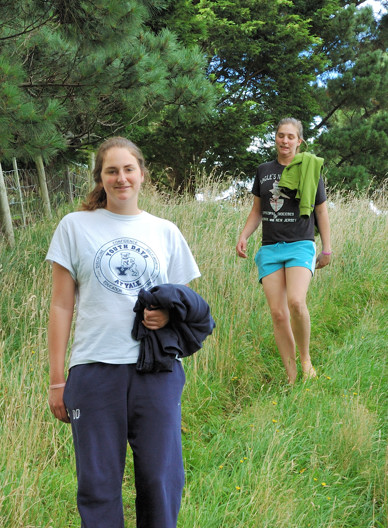 We visited their home twice. The first time was for dinner on the Friday when Taylor and Haywood arrived in Dunedin late in the evening on a bus that they had ridden for twelve hours from Picton, which is at the north end of the South Island. The second time was Sunday, two days later, when we stopped there on our way to Aramoana so that the girls also could see this fabulous place.
We visited their home twice. The first time was for dinner on the Friday when Taylor and Haywood arrived in Dunedin late in the evening on a bus that they had ridden for twelve hours from Picton, which is at the north end of the South Island. The second time was Sunday, two days later, when we stopped there on our way to Aramoana so that the girls also could see this fabulous place.
Aramoana is at the ocean end of the Otago Harbor on the mainland side. There is a small community there, consisting mostly of holiday homes. However, most of the land is either park or pasture land. At the end of the harbor is a pair of breakwaters at right angles. One guards the mouth of the harbor. The second, shown below on the right, extends the channel of the harbor. Before Port Chalmers was constructed, this used to also be a jetty where ocean going ships would anchor. Now what is left of that dock provides roosts for gulls.
Across the mouth of the harbor on the peninsula is the headland on which is the albatross reserve that we had visited two weeks before.
Although we did not see it, that headland conceals a large “Disappearing Gun.” Back in 1856 there was the distinct possibility of the Brits and the Russians having a set-to about Afghanistan. The more things change, the more they stay the same, right? But nervy New Zealanders took to defending their harbors with heavy artillery and here is where they installed a 6-in Armstrong breach loading gun, regarded as state-of-the-art high-tech when it was installed. It’s called a Disappearing Gun because it is mounted in a pit below ground level. When the loaders were ready to fire, the gun popped up, shot off, and the recoil lowered it back below ground again, jazzy stuff in the era of pre-intercontinental ballistic mass-destruction 1885. What we could see was the gun emplacements built during World War II.
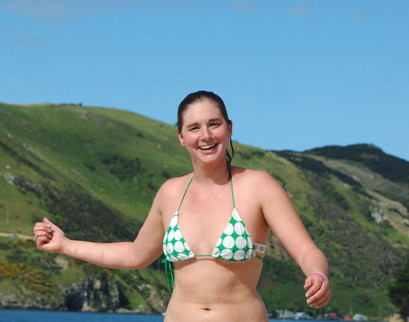 We enjoyed a picnic lunch on the beach formed by the breakwater that protects the harbor. It was a fun place to sit and walk; Taylor even took the opportunity to swim, although the water was cold enough that the rest of us confined ourselves to, at most, wading.
We enjoyed a picnic lunch on the beach formed by the breakwater that protects the harbor. It was a fun place to sit and walk; Taylor even took the opportunity to swim, although the water was cold enough that the rest of us confined ourselves to, at most, wading.
